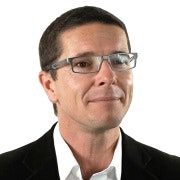A house of cards built of iron ore
| Summary: The mining sector will struggle to leap a mountain of hurdles in coming years and remains a high-risk investment. Further iron ore price shocks threaten the progress of new projects. |
| Key take-out: Mining services stalwarts might find a small glimmer of hope in Roy Hill … but only if it can win funding approval. |
| Key beneficiaries: General Investors. Category: Growth. |
While the mining services sector appears on track to generate decent returns for this financial year, the outlook for the next financial year is very bleak. Many contractors are seeing their order books diminish as miners shelve major projects and aggressively target cost cutting. As the pool of revenues becomes shallower, these companies will be forced to tender on lower margins in order to secure work.
But there is one project that contractors are looking to with a glimmer of hope – indeed, it is a project that has the potential to reinvigorate the mining services sector, but its approval is currently riding on a wing and a prayer.
Roy Hill, which is owned by Hancock Prospecting, has a defined mineralisation of more than 2.4 billion tonnes of iron ore. This is enough to sustain a mine life of more than 20 years. While the project has been mired in delays, management is aiming to load the first shipment of ore for export by 2015.
There’s just one small problem. The company has not managed to lock in the $7 billion of debt funding required to develop the mine. There are rumours that the Australian banks have pulled their support for the project, and Hancock Prospecting is now approaching international export and import banks to seal the deal.
The Roy Hill mine was initially approved in 2008 when the iron ore price was around $70 per tonne. But sentiment has changed dramatically since then, and even though the iron ore price is hovering around $140 per tonne, its precipitous fall at the end of 2012 has left many analysts wary of another downward spiral.
So there are many risks that the project will not get the go ahead, but this hasn’t deterred management from forging ahead with construction.
Hancock Prospecting has recently awarded Samsung C&T a contract of $5.6 billion to build: an iron ore processing plant with an annual processing capacity of 55 million tonnes; a railway to Port Hedland that stretches 340km; and a port that features two-berths to handle the yearly production.
If this is the first time you’ve heard of Samsung C&T as a mining services company, you’re not the only one. Samsung C&T is an international corporation that has been trying to break in to the Australian mining services market since 2010.
Samsung C&T has the capacity to handle large-scale projects – the company built the world’s largest building, the Burj Khalifa. But this was built in Dubai, where contractors could be sourced at the drop of a hat. It is unclear how efficiently Samsung C&T will be able to manage labour constraints in remote Western Australia, as delays inevitably arise.
There are a number of recently completed projects that are representative of those specified in the contract. This can give an indication of the margin of safety that Samsung C&T can handle with a $5.6 billion price tag.
First, let’s look at the cost of a processing plant. Brookfield Multiplex was initially awarded the contract to design, procure and construct the production plant at Roy Hill in 2011. At the time, Brookfield was awarded $1.2 billion, but it is estimated that it would now cost around $1.5 billion from inflated costs.
Next, let’s look at the railway. The industry standard is to quote a rate of approximately $5 million to build one kilometre of rail line. Although the Christmas Creek and Cloud Break mines are just down the road, Roy Hill is not inclined to rent Fortescue’s rail infrastructure. As such, the cost to build 340km of railway could total $1.7 billion.
Finally, there’s the cost of constructing a port with two-berths. The North West Iron Ore Alliance is a joint venture between Atlas Iron, Brockman Resources and FerrAus Limited. The alliance has proposed to build two new berths at Port Hedland with capacity of 50mtpa, for a cost of $2.1 billion. These specifications are very similar to the contract awarded by Roy Hill with processing requirements of 55mtpa.
Using these comparisons, the minimum cost for the entire project is around $5.3 billion. This doesn’t leave much margin for error, does it?
Decmil and NRW have been the first winners of contract work. Decmil has been awarded $71.1 million to design and construct rail and port infrastructure, while NRW has been awarded $67 million to complete bulk earthworks on the mine site. Both of these contracts are dependent upon Roy Hill securing the debt funding and receiving final approval.
I believe this provides further evidence of the risk inherent with investments in the mining services sector. Essentially, for more conservative investors the sector can be seen as a house of cards built on risky foundations.
At the top are the mining services contractors, who are dependent upon Samsung C&T for contract work, who in turn is dependent upon Roy Hill to receive debt funding, which in turn is dependent upon the stability of the iron ore price. If the iron ore price crashes, then the whole deck of cards will come crashing down.
Roger Montgomery is the founder of The Montgomery Fund. To invest, visit www.montinvest.com















